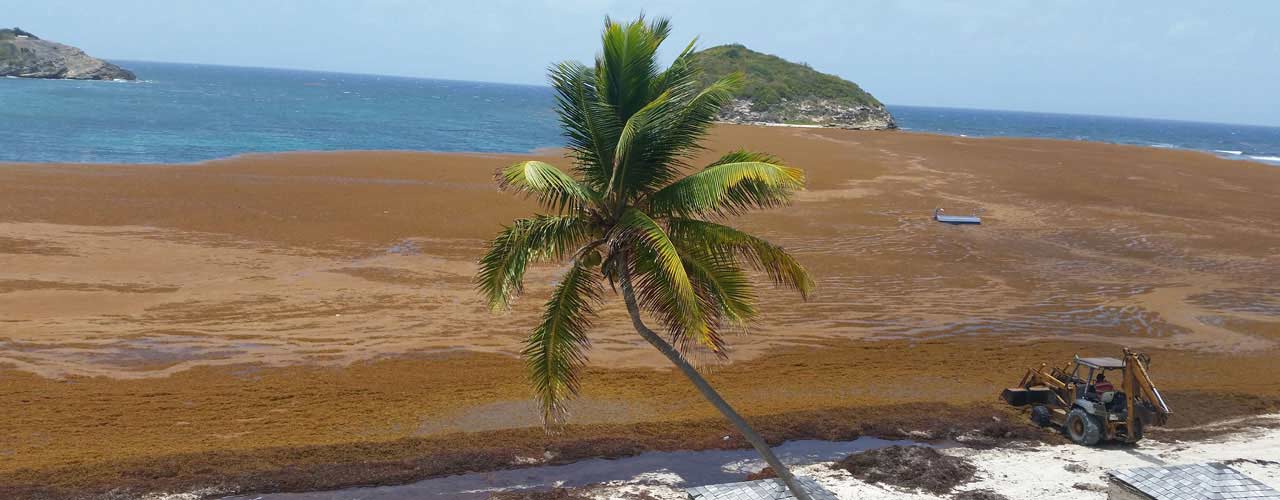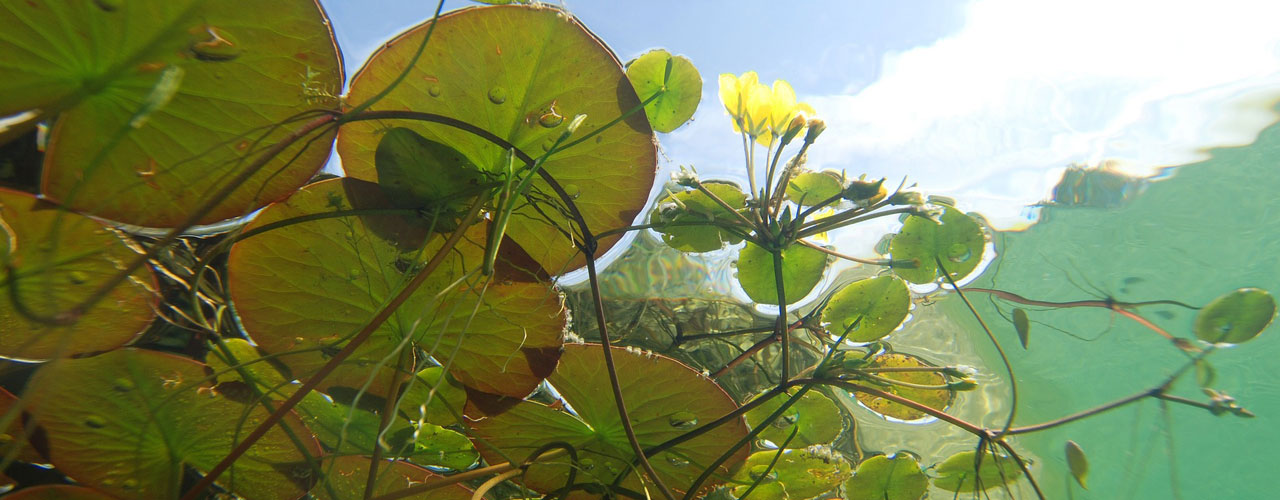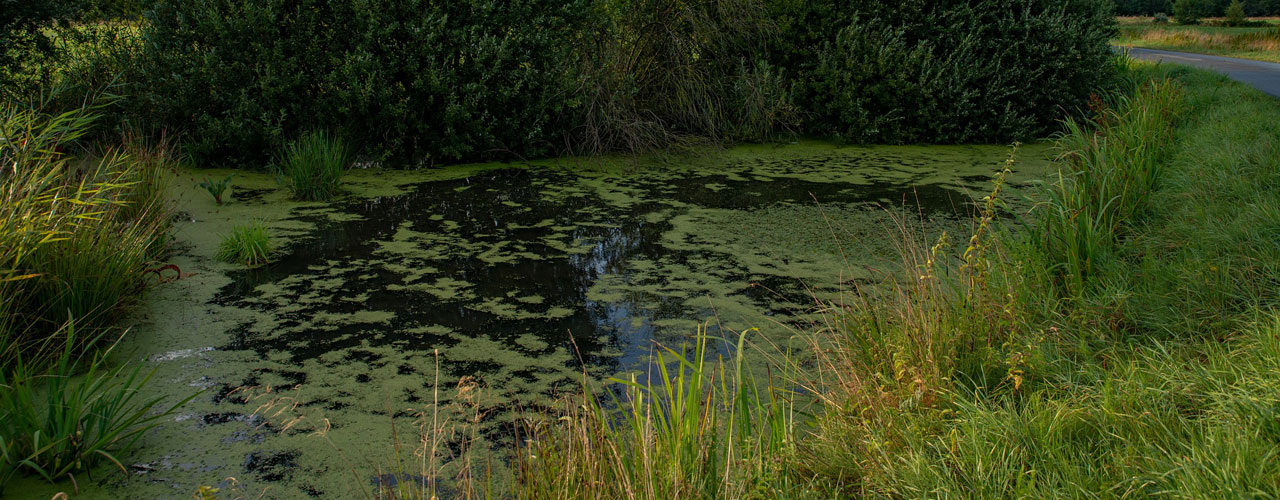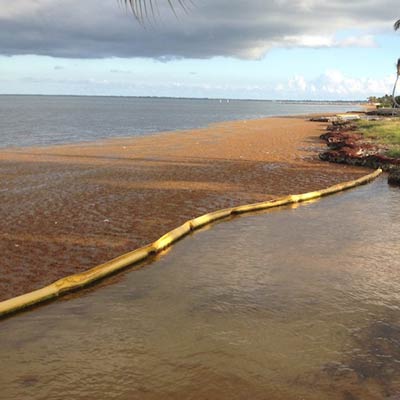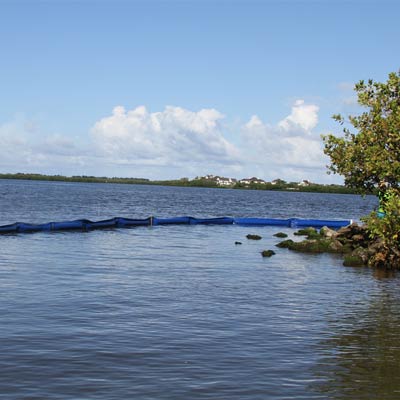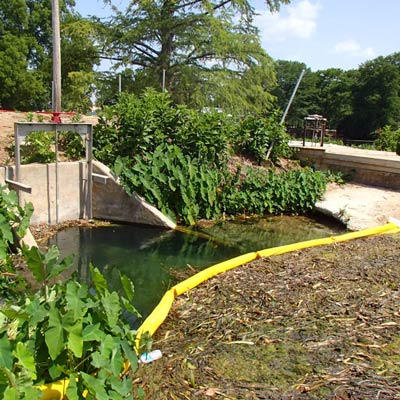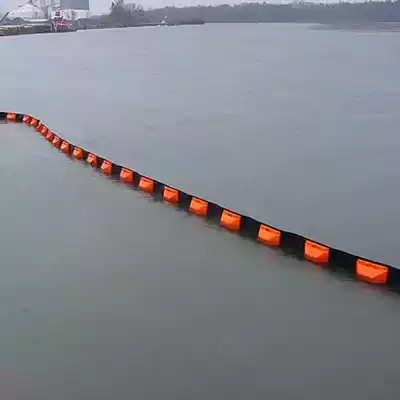Floating Invasive Aquatic Plants
Aquatic weed control is a method by which invasive aquatic plants are contained and deflected in a variety of water locations. Invasive water plants are controlled by installing containment boom barriers for floating debris. Invasive aquatic water plant examples include seaweed, sargassum, duckweed, water hyacinth, and others. Floating aquatic plants often grow exponentially in locations where they are not native. This can negatively impact the natural, existing organisms present in a body of water. Invasive water plants will often deplete oxygen in the water, killing natural plants.
Additionally, as these mats of floating aquatic plants and submerged aquatic weeds degrade, they sink and create a murky, turbid environment. This inhibits sunlight from entering the body of water and prevents organisms from growing.
Invasive Aquatic Weed Types:
- Floating: Seaweed and Sargassum, Duckweed, Water Lettuce
- Submerged: Milfoil, Clasping-Leaf Pondweed, Sago Pondweed
- Emergent: Cattail, Watershield, Purple Loosestrife
Aquatic Weed Control Boom Barriers:
- Calm Water Debris Boom
- Moving Water Debris Boom
- Fast Water Debris Boom
- Permanent Debris Boom
Are you fed up with seaweed and sargassum cluttering your beach? Aquatic weed control is necessary to curb the growth of invasive water plants in Florida. Interested in corralling, controlling, and removing the invasive water plants plaguing your body of water? We have aquatic weed control boom ready for you. Contact Us or Call us for more information at 1-863-261-8388.
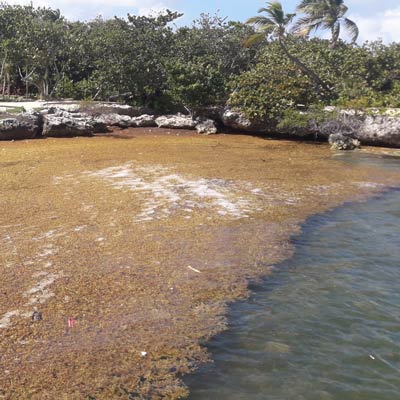
Types of Invasive Water Plants: Floating, Submerged, and Emergent
Floating aquatic plants can fall into several categories in a body of water. Depending on whether they are submerged in the water, floating on the surface, or emerging from the water's surface, different invasive aquatic weeds need different types of control.
Floating aquatic plants include:
- Algae
- Duckweed
- Watermeal
- Water Hyacinth
- Water Lettuce
- Seaweed and Sargassum
These plants that float on water's surface are usually free floating, making it difficult for swimmers and other water activities, requiring some form of aquatic weed control in ponds.
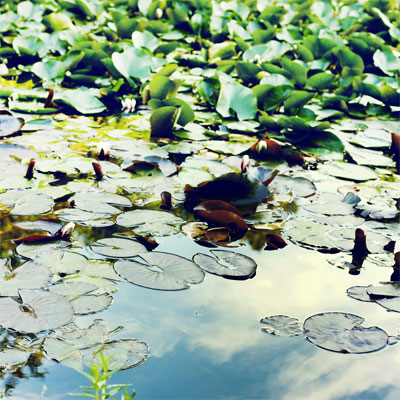
Submerged plants are under the water's surface, depleting oxygen sources in the body of water, reducing the amount of sunlight that can access different organisms in a body of water, and generally affecting the ecosystem.
Submerged invasive water plants include:
- Milfoil
- Hydrillia
- Curly-Leaf Pondweed
- Clasping-Leaf Pondweed
- Naiad
- Sago Pondweed
For emergent invasive aquatic plants, accessing different portions of a body of water will be extremely difficult. Emergent invasive aquatic plants in Florida need to be corralled before they can break off and continue to grow and spread in a body of water. These invasive water plants emerge from the water's surface as the name suggests.
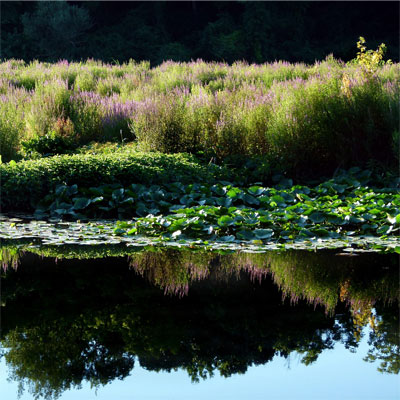
Types of emergent invasive water plants include:
- Cattail
- Water Lily
- Watershield
- Phragmites
- Purple Loosestrife
- Bulrush
Controlling Invasive Aquatic Plants
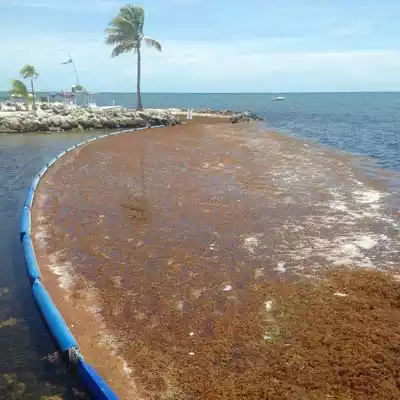
Controlling floating aquatic plants will be different depending on the type of water body. For instance, marine and ocean environments often deal with seaweed and sargassum invasions on beaches and ocean front properties. Invasive aquatic plants in Florida are especially annoying when they wash up onshore, rot, and begin to smell. Beachfront properties will need more durable, heavy-duty aquatic weed control with the tides and moving water. A heavy-duty aquatic weed control debris boom will accomplish this. Invasive water plants in Florida and in other fresh-water locations can include water lettuce, water hyacinth, watermeal, duckweed and more. Calmer water locations require more temporary aquatic weed control.
Controlling invasive aquatic plants in Florida when dealing with floating, submerged, or emergent invasive aquatic plants will require aquatic plant debris boom to stop their spread. Depending on wind conditions, water activity, and the longevity of the containment in question, you might decide that a calm water aquatic debris boom is the best choice. Aquatic weed control for watermeal or duckweed, which are free floating, will involve containment using an impermeable debris boom. Duckweed is some of the smallest invasive water plants that grow quickly. Controlling them effectively will be incredibly important.
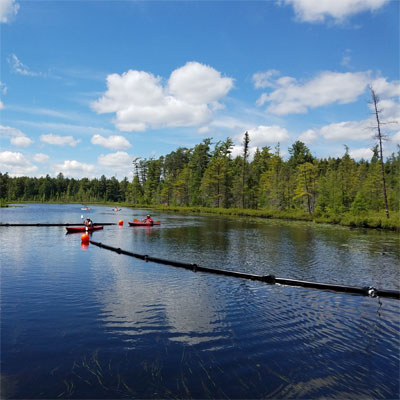
Aquatic weed control for seaweed and sargassum will include robust floating seaweed barrier and boom containment. Floating aquatic plants like seaweed and sargassum are larger plant structures that float on the surface of the water in mats. These mats will either wash up onshore, cluttering beaches or will sink and decompose in the water, causing turbidity. Controlling invasive water plants in order to collect and dispose of them economically will require reliable aquatic weed control methods. Controlling them with more of a heavy-duty, long-term aquatic plant containment boom will be necessary.
Aquatic Weeds and Their Control Over Water Bodies
Why You Need a Floating Seaweed Barrier
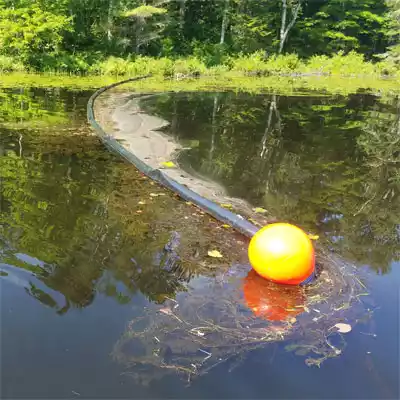
The floating seaweed barrier will contain, deflect, or exclude seaweed, sargassum, and other invasive aquatic plants. A temporary floating boom for aquatic weed control is available for calm water, moving water, or fast water. Floating aquatic plants that need a more long-term solution will be contained expertly with a heavy-duty permanent aquatic plant boom. Invasive water plants in Florida don't stand a chance against the heavy-duty aquatic plant boom and its mildew and UV-resistant fabric. Some invasive water plants need more permanent aquatic weed control methods. Aquatic weed control in ponds will mean stopping the spread and growth into different parts of the body of water. You can rely on aquatic weed control from our aquatic plant and debris boom to solve your invasive water plants.
When they grow in excess, floating aquatic plants can harm fish populations and affect water quality. Without aquatic weed control, through methods of containment, deflection, and collection, you run the risk of allowing invasive water plants to take over. When floating aquatic plants take over a pond, lake, or ocean front property, using aquatic weed control boom offers not only containment and deflection of invasive water plants in Florida. It also provides additional applications including swimming barriers, demarcation barriers, and environmental protection barriers.

Aquatic Weed Control Frequently Asked Questions
What are the different types of invasive water plants?
Invasive water plants can present themselves differently depending on the body of water. Floating aquatic plants like seaweed and sargassum, algae, and water hyacinth float in mats on the water's surface. Submerged invasive water plants like milfoil or sago pondweed keep sunlight from other organisms, affecting the food chain. Emergent invasive aquatic plants like water lilies and cattails can be corralled and stopped from spreading.
What is a method of aquatic weed control?
An aquatic weed control method for stopping the spread of invasive water plants in Florida includes durable, reliable floating containment boom. Depending on your site conditions, you might consider a calm water, moving water, or fast water aquatic plant debris boom.

